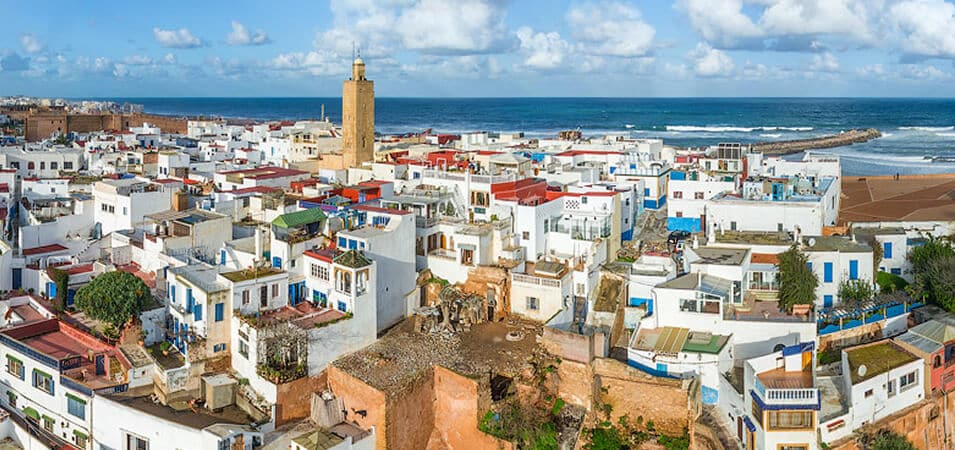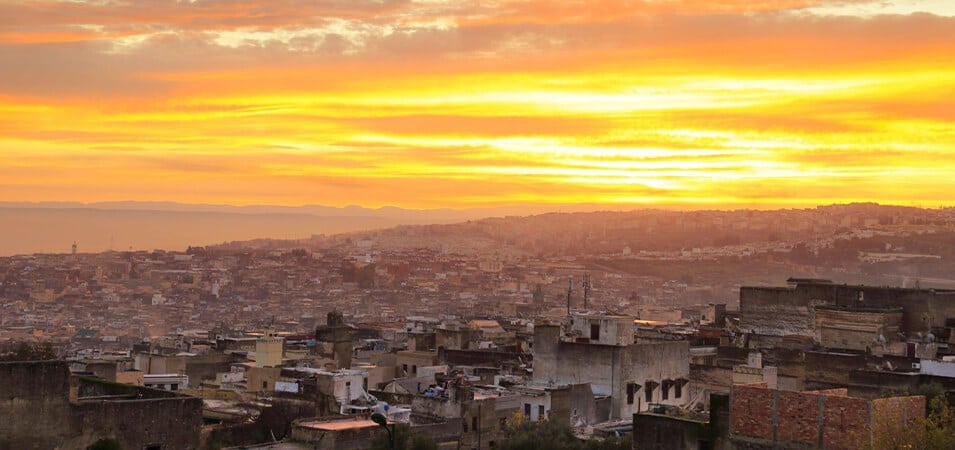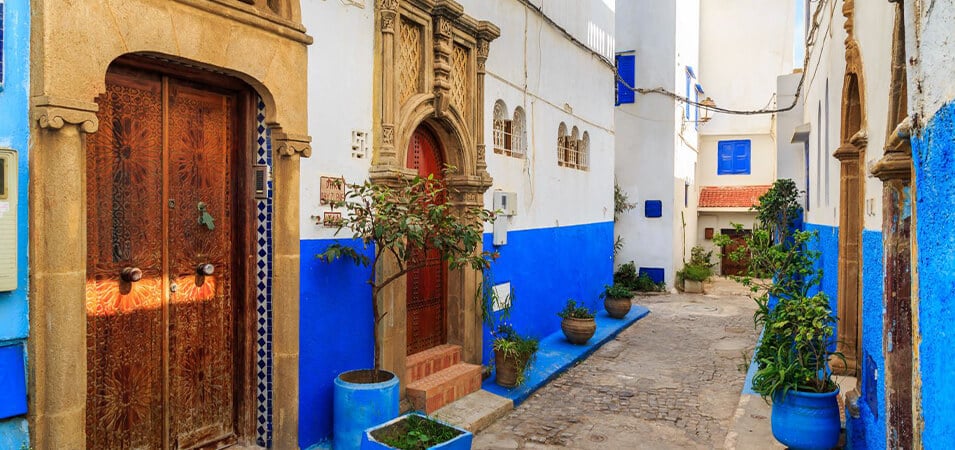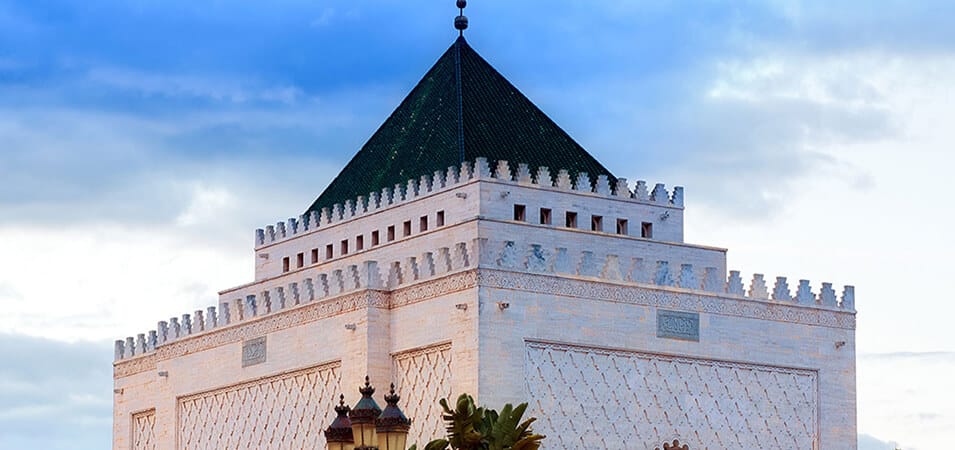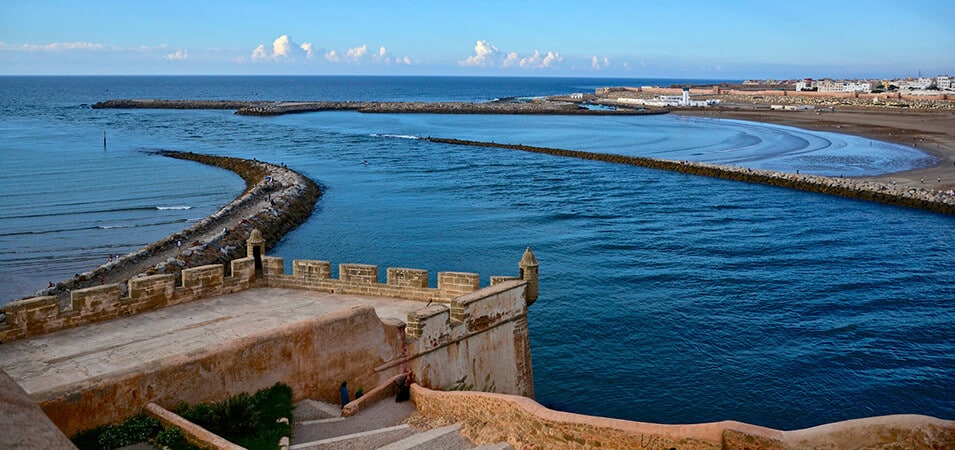The history of Rabat, Morocco, holds a significant place in understanding the essence of this enchanting city. Before embarking on your journey, delving into the historical background of Rabat will enrich your travel experience. This blog post aims to provide a comprehensive city guide, revealing the captivating history, landmarks, attractions, and cultural delights that await you in Rabat.
Don’t Miss checking out our Morocco Travel Packages
Overview of Rabat, Morocco
Location and Geography
Rabat is located on the Atlantic coast of Morocco, nestled between the Bou Regreg River and the sparkling blue waters of the Atlantic Ocean. This strategic position grants Rabat a unique blend of captivating natural beauty and historical allure. Rabat is surrounded by other enchanting cities and attractions in the country’s northwestern part, such as Casablanca, Fez, and the picturesque town of Chefchaouen.
Historical Significance
Rabat boasts a rich historical background that has shaped its unique character and cultural heritage. Throughout its existence, the city has been influenced by various civilizations, each leaving its mark on its architecture, traditions, and way of life. Rabat’s past is a tapestry woven with stories of conquest, innovation, and artistic achievements from Phoenician and Roman influences to the Islamic period and the glorious Almohad Dynasty.
The Early History of Rabat
Phoenician and Roman Influences
The history of Rabat can be traced back to the Phoenician and Roman periods. These ancient civilizations recognized the strategic importance of Rabat’s location and established thriving settlements here. Exploring the city will encounter fascinating landmarks, structures, and artifacts from this era. The archaeological site of Chellah, once a Roman town known as Sala Colonia, stands as a testament to Rabat’s ancient roots.
Islamic Period and the Founding of Rabat
With the arrival of Islam in the 7th century, Rabat emerged as an important city within the Islamic world. It was during this period that Rabat was founded and began to flourish. The town became a center of Islamic culture and scholarship, attracting scholars and artists from afar. The legacy of this historical significance can still be witnessed in the architecture and ambiance of modern-day Rabat.
The Almohad Dynasty and Golden Age of Rabat
Rise of the Almohads
One of the most significant periods in Rabat’s history was the rise of the Almohad Dynasty in the 12th century. The Almohads left an indelible mark on the city, shaping its architectural landscape and contributing to its cultural development. Under their rule, Rabat experienced a golden age, with stunning monuments and structures being built, showcasing the brilliance of Almohad architecture.
Major Landmarks and Monuments
While exploring Rabat, you will encounter iconic landmarks built by the Almohads that have withstood the test of time. The imposing Hassan Tower, an unfinished minaret of a mosque, is a striking symbol of Rabat’s historical grandeur. Adjacent to it, the Mausoleum of Mohammed V pays homage to Morocco’s revered monarchs and is a marvel of intricate design and craftsmanship. Chellah, the ancient Roman site mentioned earlier, also showcases elements of Almohad architecture and provides a glimpse into Rabat’s layered past.
Colonial Era and Modern Rabat
French Protectorate Period
During the 20th century, Rabat fell under French colonization, leaving an indelible mark on the city’s history. The French Protectorate period it has introduced modern infrastructure and notable colonial architecture, blending harmoniously with Rabat’s cultural fabric. The Kasbah des Oudaias residential area’s narrow streets and distinctive blue-and-white houses is a charming testament to this era.
Contemporary Rabat
Rabat is a vibrant and dynamic city, seamlessly blending its historical heritage with modern development. The town offers many attractions, museums, and vibrant neighborhoods to explore. The Museum of Contemporary Art showcases Morocco’s thriving art scene, while the lively streets of the Medina beckon with their dynamic markets and traditional crafts. Rabat is also known for its leafy boulevards, pristine beaches, and burgeoning culinary scene that tantalizes the taste buds.
Exploring Rabat: A Traveler’s Guide
Getting There and Transportation
To reach Rabat, you can fly into the Rabat-Salé Airport, the main gateway to the city. Alternatively, you can opt for a train journey, as Rabat is well-connected to other major cities in Morocco. Once in Rabat, navigating the city is convenient, with local transportation options such as buses, trams, and taxis readily available.
Accommodation and Hospitality
Rabat offers a range of accommodation options to suit every traveler’s needs. From luxurious hotels overlooking the Atlantic Ocean to cozy guesthouses in the heart of the Medina, there is something for everyone. Popular neighborhoods like Agdal and Hassan provide a delightful blend of convenience and charm. The locals’ warmth and hospitality will ensure a memorable stay.
Must-See Attractions and Landmarks
When exploring Rabat, be sure to visit the city’s top attractions. Historical sites such as the Kasbah of the Udayas and the Oudaias Museum offer a glimpse into Rabat’s storied past. The exquisite Andalusian Gardens provide a serene retreat, while the National Archaeology Museum houses a remarkable collection of artifacts. Don’t miss the opportunity to explore the charming Chellah and the tranquil Hassan Gardens.
Experiencing Rabat’s Culture and Cuisine
Immersing yourself in Rabat’s rich culture is a must. The city hosts numerous cultural events and festivals annually, where you can witness traditional music, dance, and vibrant celebrations. To truly experience the essence of Rabat, indulge in the local cuisine, characterized by delicious tagines, fragrant couscous, and mouthwatering pastries. Be sure to visit the bustling food markets and savor the flavors of authentic Moroccan dishes.
Practical Tips and Recommendations
Best Time to Visit Rabat
Rabat enjoys a pleasant Mediterranean climate, making it an enticing destination year-round. The spring and autumn months are enjoyable, with mild temperatures and fewer crowds. If you wish to immerse yourself in Rabat’s vibrant festivals, plan your visit around events such as the Mawazine Music Festival or the International Festival of Contemporary Art.
Safety and Security
Rabat is generally considered safe for travelers, but it is always wise to exercise caution and follow general safety tips. Stick to reliable transportation options and choose trustworthy accommodations. You can ensure a worry-free visit to this enchanting city by taking sensible precautions.
Etiquette and Cultural Sensitivity
Respecting local customs and traditions is crucial when visiting Rabat. Dress modestly, especially when visiting religious sites, and be mindful of local customs and sensitivities. It is always polite to seek permission before taking photographs of people, and a friendly “salaam alaikum” greeting goes a long way in establishing a positive connection with the locals.
Understanding the history of Rabat is paramount to appreciate the city’s charm and allure fully. From its ancient Phoenician and Roman influences to the glory of the Almohad Dynasty and the colonial era, Rabat’s past weaves a rich tapestry that beckons exploration. By delving into its history, you will unlock a deeper understanding of its landmarks, culture, and architectural marvels. Embrace the opportunity to experience Rabat’s vibrant present while celebrating its storied past, and let the city’s unique blend of history and modernity enchant you on your journey.
Don’t Miss to Check out our Related Article :

